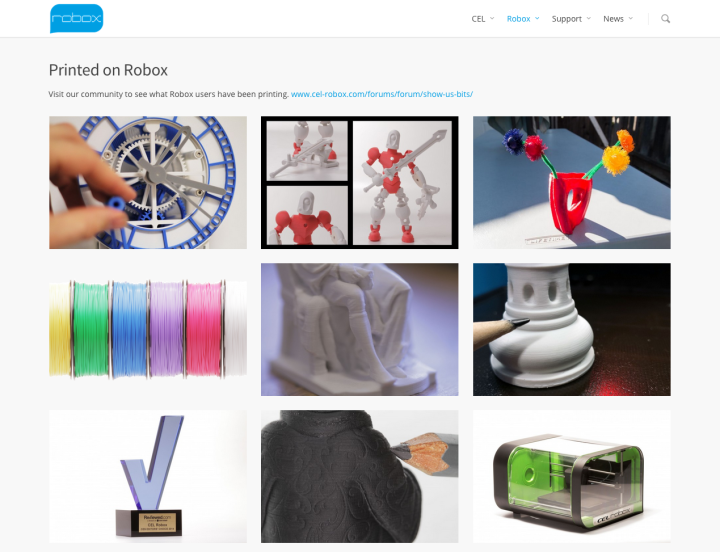
Robox’s interest in such an application for its printers is no coincidence — Chris Elsworthy, CEO of CEL and the man behind Robox 3D Printers, is dyslexic himself.
“For the first 15 or so years of my life, dyslexia made school in particular really difficult as rather than realizing I had a problem, my teachers assumed I was lazy or worse, stupid,” Elsworthy said in an interview with Digital Trends. “But my parents could see I had other skills which were just as important to nurture, so [they] spent a lot of time encouraging me to fix things around the house — fix the car, build model airplanes, and use construction sets.”
When he was formally diagnosed with dyslexia as a teenager, the role of technology in his life became even more pronounced — after being awarded a grant, “technology helped [him] to cope with communicating, reading, [and] writing.” Ultimately, Elsworthy concluded, “Technology became an aid … on the theoretical side as well as the practical.”
So what is it about technology that sets it apart from more “traditional” forms of education? “Because technology has a different language,” Elsworthy explained, “it means technical drawing, modeling, and working out how things work can all be communicated without words, writing, and reading. Understanding mechanics, and engineering, and how things work is the complete opposite of learning to read and write — the two skill sets are not intertwined.”
3D printing in particular, Elsworthy believes, provides a unique solution that helps address problems such as dyslexia. Said Elsworthy, “3D printing allows you to explore mechanics, engineering and how things work without the need for books. It is the difference between academia and practical application.” These printers and this technology, Elsworthy believes, “can serve as a creative outlet for children with dyslexia and … help them develop their own creativity … When it comes to creative projects, which tend to utilize writing and reading skills specifically, it can be difficult [for dyslexics] to excel.” And this is where the power of 3D printing really comes into play.
Whereas traditional forms of presentation and communication rely heavily on prepared reports and papers, 3D printing allows us to bypass this intermediary, paper-bound step, instead immediately translating an idea into a tangible object. Robox’s technology allows the user to circumvent the written language — indeed, children can draw pictures, make models, show workings, and then apply what they’ve learned without ever having to struggle through a Word document.
Elsworthy continued, “Where someone with dyslexia may not be able to write about or show off an idea in its full complexity, with 3D printing, they can [create] a reality. And because those with dyslexia tend to have a strong sense of spatial awareness and are natural problem solvers, they’re able to more intuitively tap into the design process of creating a 3D model and bringing it to life as a final print.”
While Elsworthy was lucky enough to be find technology early on in his life, others lack the same opportunities. Consequently, Robox attempts to lower the barrier of entry when it comes to access 3D printers and similar technology. Explained Elsworthy, “Because Robox printers are reasonably priced and less bulky than other 3D printers, they offer the benefit of being more easily accessible. Robox is easy to use, so those of a younger age can develop and print items, making it easy for children diagnosed with a learning disorder to start honing their creative abilities.” He added, “The Robox is also a relatively intuitive technology — we find that many children are able to plug it in and start printing models before some adults — they just realize the potential 3D printers have straight away.”
The potential for 3D printing in the home and as an educational tool, specifically for those with learning disorders, is boundless, says Elsworthy. While 3D printers are not yet common fixtures in the average households, Elsworthy believes that this may soon change, especially as technology is introduced to children at a younger and younger age as a learning tool. Whereas smartphones, tablets, and laptops can isolate young children in an alternate, virtual world, 3D printing unites everyone in a self-made reality.
“3D printers bring back the engagement between parents and children, while allowing families to experiment, build, and create using technology,” Elsworthy said. This has certainly been the case in his family, and just maybe, it’ll be the case for families across the U.K., and one day, the world.


